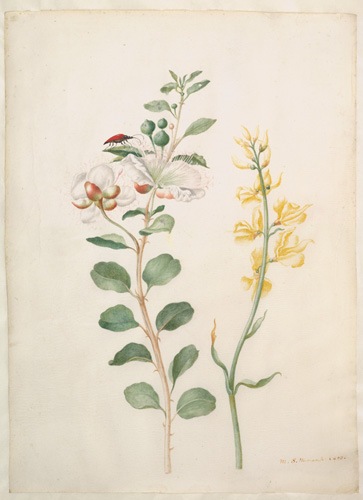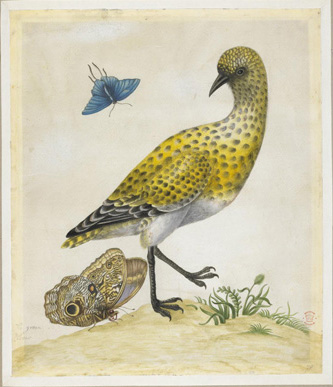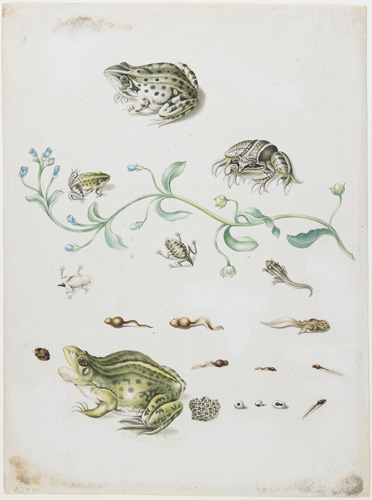Maria Sibylla Merian
Selected Works

Study of Capers, Gorse, and a Beetle
1693
Maria Sibylla Merian, Study of Capers, Gorse, and a Beetle, 1693. Watercolor with white gouache on vellum, 35.5 x 26.2 cm. Metropolitan Museum of Art
Metropolitan Museum of Art

Scarlet Ibis with an Egg
1699–1700
Maria Sibylla Merian, Scarlet Ibis with an Egg, 1699–1700. Deck paint and gouache on parchment, 42.1 x 30.8 cm. Rijkmuseum
Rijksmuseum

Golden Plover with Examples of Two Butterflies
1701–05
Maria Sibylla Merian, Golden Plover with Examples of Two Butterflies, 1701–05. Watercolor touched with bodycolor and with pen and gray ink on vellum, 35.5 x 30.2 cm. British Museum
British Museum

Watermelon with Caterpillar and Moth
1705
Maria Sibylla Merian, Watermelon with Caterpillar and Moth, 1705. Watercolor touched with bodycolor and with pen and gray ink on vellum, 36.8 x 28.6 cm. British Museum
British Museum

Metamorphosis of a Frog and Blue Flower
ca. 1701–05
Maria Sibylla Merian, Metamorphosis of a Frog and Blue Flower, ca. 1701–05. Watercolor and bodycolor on paper, 30.48 x 26.67 cm. Minneapolis Institute of Art
Minneapolis Institute of Art